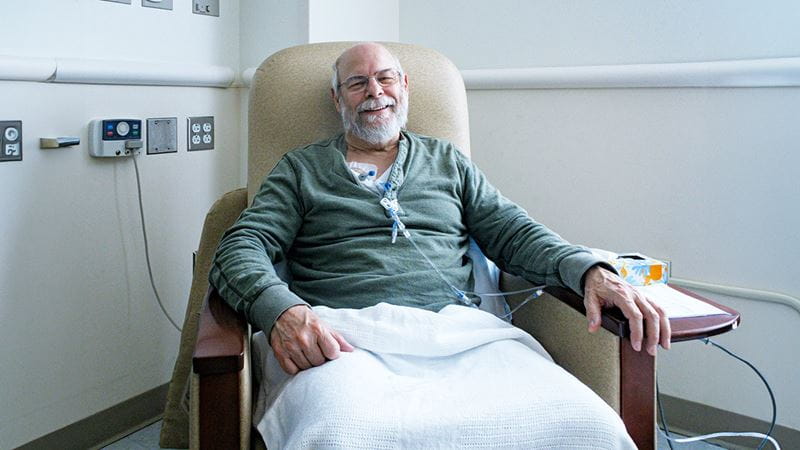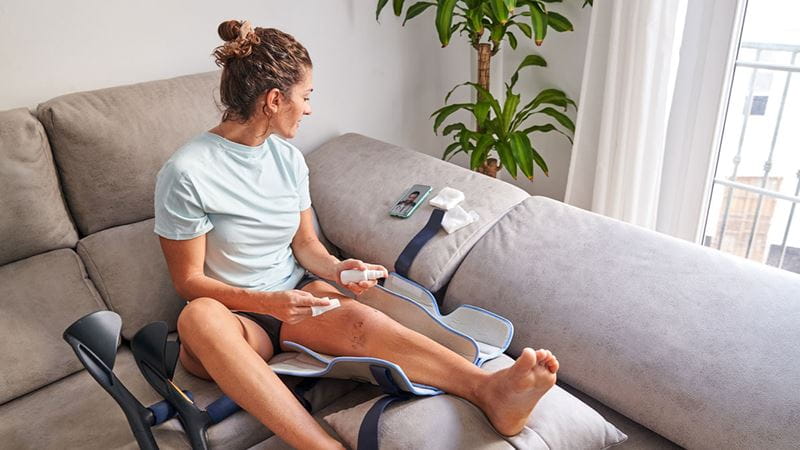Blog article
Elective surgery 101: Rehabilitation and physical therapy

Finding the right balance between rest and gentle movement is key to regaining your strength and avoiding complications like stiffness or blood clots.1,2
In this blog, we explain how to safely reintroduce physical activity into your routine, focusing on mobility, gentle exercises, and when to seek professional advice.
Start with gentle movement
It might be tempting to stay in bed all day, but light movement is crucial for your recovery. Gentle activity can improve circulation, prevent stiffness, and boost your energy levels.2
Follow your doctor’s advice: Always start by following any specific activity guidelines given by your doctor or physiotherapist. They’ll know what’s safe for your situation.
Begin with basic mobility exercises: Simple movements like ankle pumps, leg lifts, and arm stretches can help maintain flexibility and prevent muscle weakness.
Take short walks as tolerated: Even if it’s just a few steps around your home, getting up and moving at regular intervals can help prevent complications like blood clots.2
Listen to your body
While staying active is important, pushing yourself too hard can lead to setbacks. Pay close attention to how your body feels and adjust your activity levels accordingly.1
Pace yourself: Start with low-intensity exercises and gradually increase the duration or intensity as your strength improves.
Watch for signs of overexertion: If you feel dizzy, lightheaded, or experience increased pain or swelling, stop and rest. It’s better to take it slow than risk re-injury.
Rest when needed: Remember, rest is just as important as activity. Allow your body the time it needs to recover between exercises or activities.
Gradually reintroduce strengthening exercises
As you begin to regain strength after surgery, it’s essential to follow your healthcare team’s guidance on when and how to reintroduce exercises. Once you have clearance from your healthcare provider, they may recommend specific exercises to help rebuild muscle and improve mobility, including:
Body weight exercises: Start with gentle body weight exercises like seated leg lifts, wall push-ups, or gentle squats. These can help you regain strength without putting too much strain on your body.3
Resistance bands: If you’re ready for more resistance, simple exercises with resistance bands can be highly effective in rebuilding muscle strength.3
Remember, your recovery plan should be tailored to your needs, so always check with your healthcare professional before trying new exercises.
Use mobility aids if needed
Depending on the type of surgery you had, you may need to use mobility aids like crutches, a cane, or a walker for a while. Here’s how to use them safely:2
Get properly fitted equipment: Make sure your mobility aids are correctly adjusted for your height and body type to avoid strain and discomfort.
Follow your healthcare provider’s instructions: Whether it’s how to walk with crutches or when to transition off them, always follow the guidance you’re given to avoid injury.
Practice good posture: Using mobility aids can sometimes lead to hunching or poor posture, which can cause additional strain. Focus on standing and walking tall as much as possible.
Gradually resume normal activities
Over time, you’ll start feeling ready to resume more of your daily activities, but it’s important to do so gradually.1
Follow your healthcare provider’s timeline: They’ll let you know when it’s safe to resume activities like driving, lifting, or returning to work.
Prioritise low-impact activities: Start with gentle activities like walking, stretching, or swimming to ease back into your routine.2
Be patient with yourself: Recovery isn’t always linear – there may be good days and bad days. Don’t rush the process; focus on steady, sustainable progress.
Know when to seek professional help
While it’s natural to experience some discomfort during recovery, certain symptoms should be addressed by a healthcare professional:
Pain that worsens or doesn’t improve: If you’re experiencing severe or worsening pain with movement, contact your doctor. This could indicate a complication that needs attention.2
Swelling or redness: Sudden or persistent swelling or redness especially in the legs, could be a sign of a blood clot and should be evaluated immediately.4
How can HBF help?
If you have eligible extras cover with HBF, you may be able to claim benefits for visits to a physiotherapist. Physio is often a key part of post-surgery recovery, helping you regain strength, manage pain, and improve mobility.
A qualified physiotherapist can:
Assess your recovery progress: They’ll evaluate your current condition and tailor a rehab plan to your specific needs.
Provide targeted exercises: A physio will guide you through exercises designed to gradually rebuild strength, flexibility, and range of motion, all while minimising the risk of re-injury.
Manage pain effectively: Physiotherapists use various techniques like massage, stretching, and gentle movement to relieve discomfort and promote healing.
Offer ongoing support: Your physio can adjust your exercise plan as your recovery progresses, helping you transition back to daily activities safely and confidently.
Safely getting back on your feet after surgery is a gradual process that requires patience, listening to your body, and following your healthcare team’s guidance.
By incorporating gentle movement, gradually increasing your activity levels, and using mobility aids as needed, you can support your body’s healing and regain your strength more effectively.


